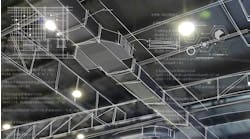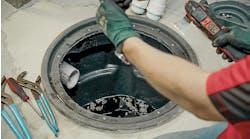Editor's note: This is Part 4 of a four part interview conducted by Mark Eatherton with the new executive director of the RPA, Ted Lowe. Read Part 1, Part 2 and Part 3.
Question: If we can just convince the powers that be — our government — that this is the most efficient way to go, then there's a chance of getting the additional costs of setting up low temperature, high-efficiency hydronic distribution systems being served by the ground source heat pumps or solar thermal systems incorporated into the tax credits being offered for these base systems.
Answer: Well that is one of the issues that I can see right now, and that is that the legislators at this point are not seeing the whole picture. I understand that there is a "let's hurry up and do something" attitude about giving credits for geothermal and solar, but without truly understanding how you enable those technologies, or how you best utilize those technologies there is a missing link, and as an organization we are the missing link and we have the technology and we have the proven means of enabling these other technologies to really achieve their potential, and that is the message we have to get out.
Q: I've often said, and I hope it happens within my life time, that one day, the only means of distribution that will be allowed, will be low temp radiant heat, whether it is walls, floor ceilings or windows, and I am seeing a trend towards that end. It just makes sense, and it is the most efficient means of making and keeping people comfortable with the least amount of energy usage.
A: There is a building code in Europe that is coming out of Switzerland and it’s called Minergy, and that is exactly what that building code says. It talks about the building as a holistic unit, and one of the stipulations is that the low temperature distribution system has to be low temperature hydronics. And that was a part of that U.S./Swiss Clean Tech dialogue that I spoke of in Reno that we are a charter member of. We are one of the very first seats at that table. And that will be a part of an ongoing discussion, and they are looking to our organization for guidance in our area of expertise.
Q: Can you tell me about the organization’s new home?
A: The World Headquarters of the organization is a constantly evolving space. We've essentially got a shell, which we immediately outfitted with a radiant floor, which was a generous donation by the members of the RPA, including Northwest Ohio Foam Products, Warmboard, Watts, Viega, Uponor, Roth and Jaga for a radiant ceiling cooling system, and eventually some radiant wall. It will be a state-of-the-art radiant facility showcasing all kinds of technology, eventually including ground source heat pump, solar thermal, mod-con boilers, chillers, high velocity air, basically showing all the high-tech systems available on the market today. Furthermore, we are in New York, so one of the things we are trying to do is dispel the myth that radiant cooling can't be done in this type of climate.
Q: What are your personal goals as the new executive director?
A: My goal as the new executive director is to increase our educational offerings, essentially doubling its size and offering and enlarging the organization as a whole, and to do it in a sustainable way with people who share the vision of the future and the application of this appropriate technology, and to create bridges to like minded organizations, so we can promote these technologies with a unified voice.
Q: Any last comments you would like to add?
A: The only thing I would like to add is a "Call to Arms" and ask that the people who feel the way that we feel, based on having read this series of articles, that they take the initiative to contact us, and make suggestions about the way that they would like to see us come together as an industry and help us be heard. And I am including guys like Dan Holohan and Rich Trethewey, who went their own way even though we had a similar path. We need open discussions that aren't so much about what we disagree on as much as it is what we do agree on, so that we can move the industry forward. My ultimate goal is to advance the interests of this industry.
There is so much that we can bring to this party that has been neglected, or overlooked or just ignored because we didn’t have the strength in numbers, and there is a substantial amount of opposing force from the forced air side of the industry. That 95% is not interested in giving up any of their market share, so we have to act as an industry to get our piece. We have a system that makes sense in terms of reducing energy consumption, carbon foot prints and delivering comfort, and we must be heard.
This completes my series of articles interviewing Ted Lowe. If you haven't been to the RPA website in a while, check it out at: www.radiantpanelassociation.org, and if you are not a member, consider joining them. It is a worthwhile organization to belong to.
Tune in next month as we dig into the internal workings of a good sized geothermal (volcanic) heating system that I reviewed in Breitenbush, Ore. Until then, keep your tools dry and well oiled, and happy hydronicing!
Mark Eatherton is a Denver-based hydronics contractor. He can be reached via e-mail at [email protected] or by phone at 303-936-7606.
All Mark Eatherton material on this website is protected by Copyright 2010. Any reuse of this material (print or electronic) must first have the expressed written permission of Mark Eatherton and CONTRACTOR Magazine. Please contact via email at: [email protected].

